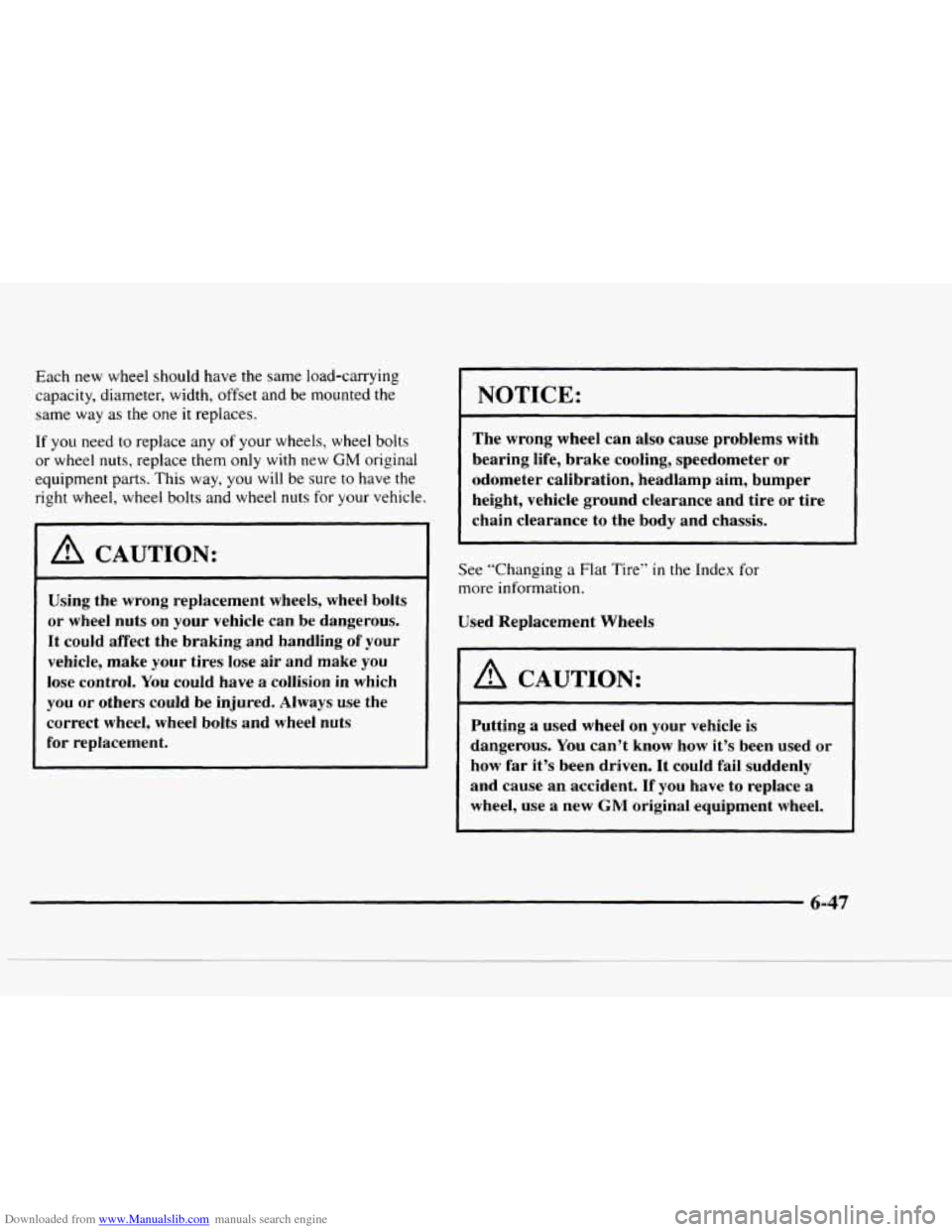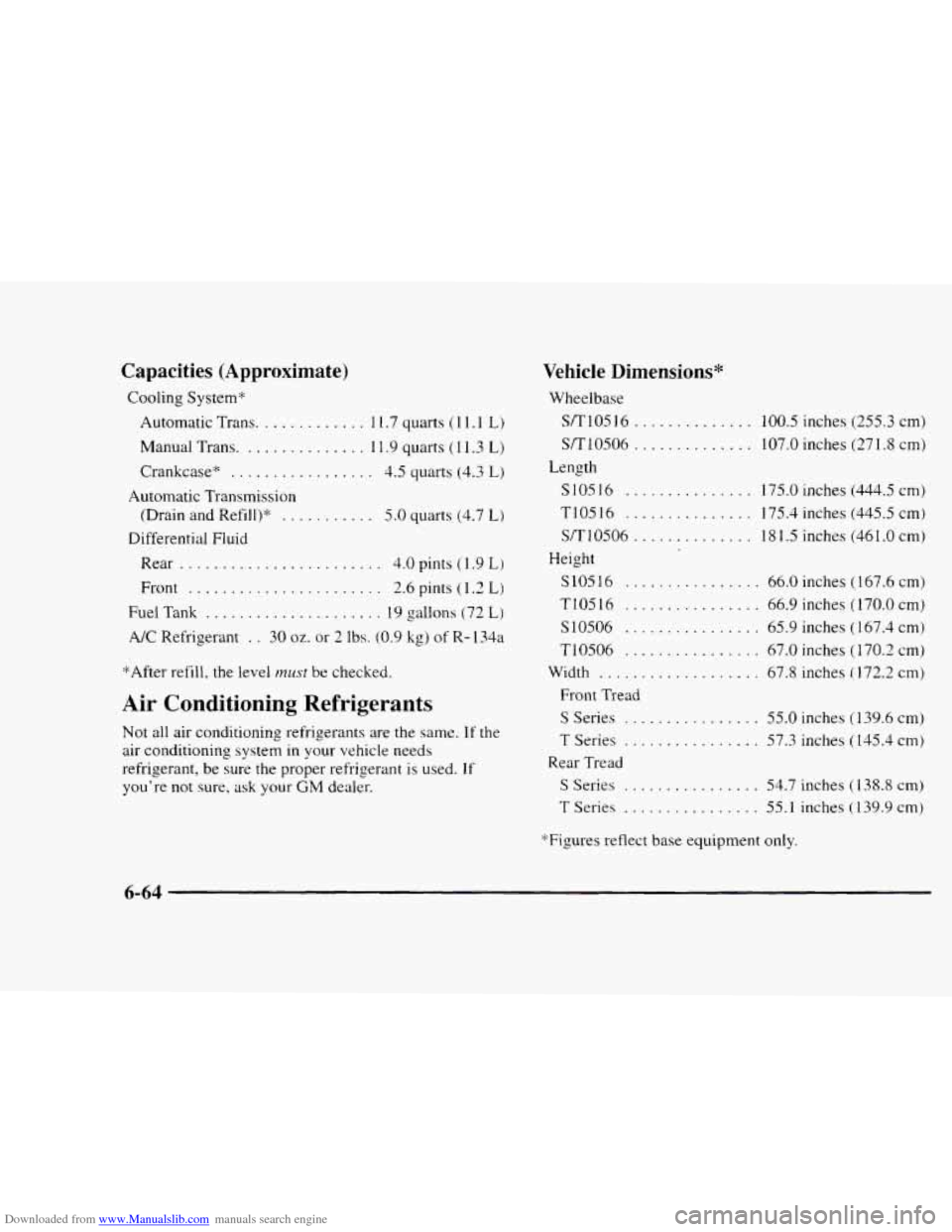Page 26 of 402
Downloaded from www.Manualslib.com manuals search engine What’s wrong with this?
A CAUTION:
~~
You can be seriously injured by a twisted belt. In
a crash, you wouldn’t have the full width of the
belt
to spread impact forces. If a belt is twisted,
make it straight
so it can work properly, or ask
your dealer
to fix it.
A: The belt is twisted across the body.
1-19
Page 185 of 402

Downloaded from www.Manualslib.com manuals search engine Q: Am I likely to stall when going downhill?
A: It’s much more likely to happen going uphill. But if
it happens going downhill, here’s what to do.
0 Stop your vehicle by applying the regular brakes.
Shift to PARK (P) (or to NEUTRAL (N) with the
Apply the parking brake.
nlanual
transmission) and, while still brakin,,
0 restart
the engine.
and drive straight down.
Shift back to a low gear. release the parking brake,
If the engine won’t start, get out and get help.
Driving Across an Incline
Sooner or later, an off-road trail will probably go across
the incline of a hill. If this happens, you have to decide
whether
to try to drive across the incline. Here are some
things
to consider:
0 A hill that can be driven straight up or down may be
too steep to drive across. When you
go straight up or
down
a hill. the length of the wheel base (the
distance from the front wheels
to the rear wheels)
reduces the likelihood
the vehicle will tumble end
over end.
But when you drive across an incline, the
much more narrow track width (the distance between
the left and
right wheels) may not prevent the vehicle
0
0
from tilting and rolling over. Also, driving across an
incline puts more weight
on the downhill wheels.
This could cause
a downhill slide or a rollover.
Surface conditions can be
a problem when you drive
across
a hill. Loose gravel. muddy spots, or even wet
If the vehicle slips sideways. it can hit something
that
will trip it (a rock. a rut, etc.) and roIl over.
Hidden obstacles can make the steepness
of the
incline even worse. If you drive across a rock with
the uphill wheels, or if the downhill wheels drop into
a rut or depression, your vehicle can tilt even more.
2 orass can cause your tires to slip sideways. downhill.
For reasons like these, you need
to decide carefully whether
to try to drive across 31 incline. Just because the trail goes
;lcross the incline doesn’t mean you have to drive it. The
last vehcle
to try it might have rolled over.
A CAUTION:
Driving across an incline that’s too steep will
make your vehicle roll over. You could be
seriously injured or killed.
If you have any doubt
about the steepness
of the incline, don’t drive
across it. Find another route instead.
A
4-24
Page 302 of 402

Downloaded from www.Manualslib.com manuals search engine Each new wheel should have the same load-carrying
capacity, diameter, width,
offset and be mounted the
same way as the one it replaces.
If you need to replace any of your wheels, wheel bolts
or wheel
nuts, replace them only with new GM original
equipment parts. This way, you will be sure
to have the
right wheel, wheel bolts and wheel nuts for your vehicle.
I A CAUTION:
NOTICE:
The wrong wheel can also cause problems with
bearing life, brake cooling, speedometer or
odometer calibration, headlamp aim, bumper
height, vehicle ground clearance and tire
or tire
chain clearance to the body and chassis.
Using the wrong replacement wheels, wheel bolts
or wheel nuts
on your vehicle can be dangerous.
It could affect the braking and handling of your
vehicle, make your tires lose
air and make you
lose control. You could have a collision in which
you or others could be injured. Always use the
correct wheel, wheel bolts and wheel nuts
for replacement.
See “Changing a Flat Tire” in the Index for
more information.
Used ’Replacement Wheels
I A CAUTION:
Putting a used wheel on your vehicle is
dangerous. You can’t know how it’s been used or
how
far it’s been driven. It could fail suddenly
and cause an accident.
If you have to replace a
wheel, use a new
GM original equipment wheel.
6-47
Page 319 of 402

Downloaded from www.Manualslib.com manuals search engine Capacities (Approximate)
Cooling System* Automatic Trans.
............ 1 1.7 quarts ( 1 I. 1 L)
Manual Trans. .............. 1 1.9 quarts ( 1 1.3 L)
Crankcase* ................. 4.5 quarts (4.3 L)
Automatic Transmission
(Drain and Refill)"
........... 5.0 quarts (4.7 L)
Differential Fluid
Rear
........................ 4.0 pints (1.9 L)
Front ....................... 2.6 pints (1.2 L)
Fuel Tank ..................... 19 gallons (72 L)
A/C Refrigerant . . 30 oz. or 2 lbs. (0.9 kg) of R- 134a
*After refill, the level
must be checked.
Air Conditioning Refrigerants
Not all air conditioning refrigerants are the same. If the
air conditioning system in your vehicle needs
refrigerant, be sure the proper refrigerant
is used. If
you're not sure, ask your GM dealer.
Vehicle Dimensions*
Wheelbase
S/T10516 .............. 100.5 inches (255.3 cm)
1 S/T10506 .............. 107.0 .
Length
S10516 ............... 175.0
T10516 ............... 175.4 nches
(27 I .8 cm)
nches (444.5 cm)
nches (445.5 cm)
S/T 10506 .............. 18 I .5 inches (46 I .O cm)
Height
S10516 ................ 66.0 inches (167.6 cm)
T10516
................ 66.9 inches (170.0cm)
S10506
................ 65.9 inches (167.4 cm)
T10506
................ 67.0 inches (170.2 cm)
Width
....... .......... 67.8 inches ( 172.2 cm)
Front Tread
S Series ................ 55.0 inches (139.6 cm)
T Series ................ 57.3 inches (145.4 cm)
S Series ................ 54.7 inches (138.8 cm)
T Series ................ 55.1 inches ( 139.9 cm)
Rear Tread
*Figures reflect base equipment only.
6-64